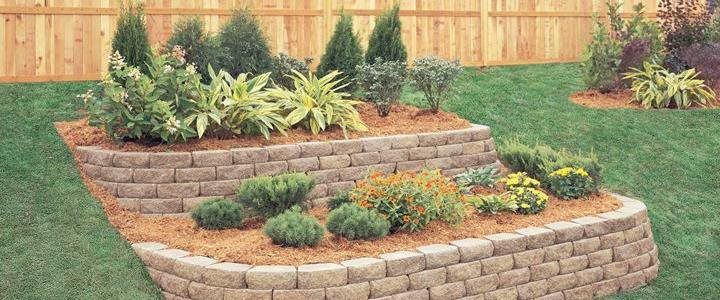(BPT) – There are many popular ways people chose to get the most out of their outdoor living space these days. They build a fireplace or a fire pit, install lighting or a water feature, add a paver patio or outdoor kitchen, or plant a garden or trees — the possibilities are limited only to a person’s imagination and budget. However, accommodating these upgrades can be a challenge if the area is excessively sloped. In those situations, functional square footage can easily be added to the outdoor living space by building a small retaining wall.
Strategically placing a 2- to 3-foot high retaining wall will expand an outdoor living space that would otherwise go unused with a structurally sound surface for those desirable elements. Beyond creating more useable outdoor space, retaining walls can also serve a variety of purposes ranging from planters and benches to decorative terraces and fences. In addition, with a seemingly endless array of stone sizes, shapes, colors and textures from a company like Pavestone, homeowners can really customize a retaining wall to fit their personality and taste. While larger retaining walls will require a contractor, smaller versions can be completed as a do-it-yourself weekend project at a fraction of the cost.
Note: wearing gloves and eye protection is recommended
Steps for building a retaining wall:
* Estimate the size and shape of the wall being built so the number of stones can be determined.
* Outline the size and shape of the wall on the ground with a garden hose and spray paint.
* Excavate dirt from the area with a shovel, being sure to dig a trench 12-inches wide by 4-inches deep. For organic soils consisting mostly of sand, silt and dirt, dig 4-inches deeper. Cut through and remove any sod, roots or large rocks.
* Tamp the soil in the trench and add 1-inch to 4-inches of paver base to the bottom of the trench, to smooth and level the surface. For walls taller than three layers the first layer should be completely buried.
* Place and level the first wall unit. Level each additional unit on the base course as you place it, making sure the outside edges touch. If your wall contains both straight and curved areas, start with a straight area and build into the curves. Complete the base course before proceeding to the second course.
* Starting with straight areas first, begin placing the second course. Center each unit on the seams of the course below in a running bond pattern. Now proceed to the next layer, back filling with the excavated dirt as you go.
* For drainage behind the wall, clean gravel or crushed stone is recommended. Use clean granular backfill such as gravel or crushed stone for drainage and to prevent soil from leaching through the wall. A commercial filter fabric stocked by most garden supply stores may be used when existing site soils are used for backfill.
* Re-size stones with a chisel and hammer to fill gaps small gaps in the wall as necessary.
* Continue the stacking process until the retaining wall reaches the desired height.
QUIKRETE Polyurethane Construction Adhesive can be placed between layers to strengthen the retaining wall. The finished project is sure to help make your outdoor living area the spot for family gatherings and entertaining friends. For more tips, direction and information on building a retaining wall or other home improvement projects with pavers or stone, visit the Pavestone website and Facebook.

